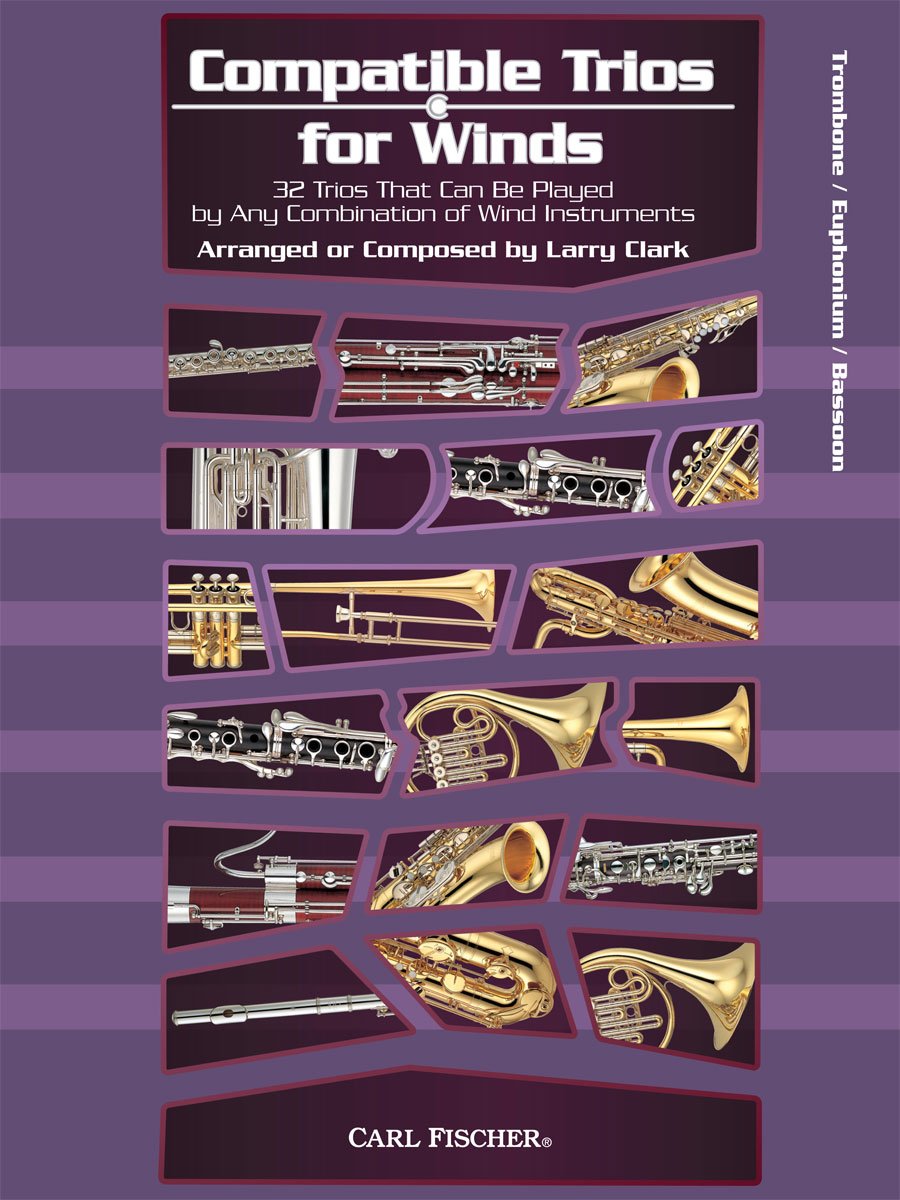Various
 Compatible Trios for Winds: 32 Trios that Can Be Played by Any Combination of Wind Instruments
Compatible Trios for Winds: 32 Trios that Can Be Played by Any Combination of Wind Instruments
Arranged by Larry Clark
New York, NY, United States
Publisher: Carl Fischer
Date of Publication: 2012
URL: http://www.carlfischer.com
Paper bound score. 48 pages.
Primary Genre: Brass Ensemble - 3 brass
Secondary Genre: Trombone Ensembles - 3 trombones
 Compatible Trios for Winds: 32 Trios that Can Be Played by Any Combination of Wind Instruments
Compatible Trios for Winds: 32 Trios that Can Be Played by Any Combination of Wind InstrumentsArranged by Larry Clark
New York, NY, United States
Publisher: Carl Fischer
Date of Publication: 2012
URL: http://www.carlfischer.com
Paper bound score. 48 pages.
Primary Genre: Brass Ensemble - 3 brass
Secondary Genre: Trombone Ensembles - 3 trombones
Larry Clark is well known to those familiar with the well-established publisher, Carl Fischer. As chief editor of this world renown music company he oversees all their publications while at the same time maintaining a parallel career as a composer with over 200 publications in print. A background in education prepared him for these roles; he has served as band director at the university and middle school levels in the USA. It is his experience with middle school students that led to this publication. In the forward he says, “...I always had students who wanted to come to the band room during lunch period or after school; eager students who simply wanted to play music with their friends. However, that was not possible at the time, since there was very little trio material available that was compatible with all of the wind instruments. This book takes care of that. A student can now grab a few fellow musicians, no matter what instrument they might play, and have hours of fun playing trios together.” Mr. Clark composed two of these 32 trios; the rest he arranged. Of these arrangements, eight originate with national folk melodies: Auld Lang Syne, Irish Washerwoman, Loch Lomond, etc. The remaining 24 trios come from classic composers: Couperin, Beethoven, Mozart, Haydn, Tchaikovsky, Brahms, etc up through MacDowell. These selections range from well known, Dvořák ‘Largo’ from Symphony No.9, to more obscure, Gurlitt The Mill, etc. The trios are progressive in difficulty to some degree and hold exclusively to keys ranging from one to four flats. Melodic material is well distributed through all three parts, which generally helps place all the parts at a similar ability level with regard to rhythm and phrasing. However, the first part plays above the staff much more than the others with many instances of f1 and several instances of g1. The bass part lives in the bottom of the staff, as might be expected, and plays F often. There is no real polyphony here, a little homophony. Most of the music is cast in melody/accompaniment format set in a good mix of duple and triple meter. While there is some lyricism, most of the trios are technical in nature, dancing, moving, energetic. All the pieces are one or two pages in length with only one impossible page turn. Dynamics and articulation markings are provided that define style and character quite well. These trios are not project pieces that introduce new technique or musical concepts. They are designed for fun and success, and they hit that mark. They are not particularly idiomatic for trombone, especially the third part; this is an inevitable consequence of the instrument compatibility feature in their design. Nevertheless, I use them regularly with young trombonists who enjoy their challenge and the fun of playing together. In the rather large pantheon of material mass produced for young players, these trios are above average in quality, reasonably priced and readily available. -Mike Hall Old Dominion University
Reviewer: Review Author
Review Published July 10, 2023
Review Published July 10, 2023